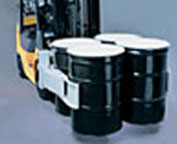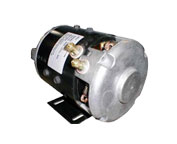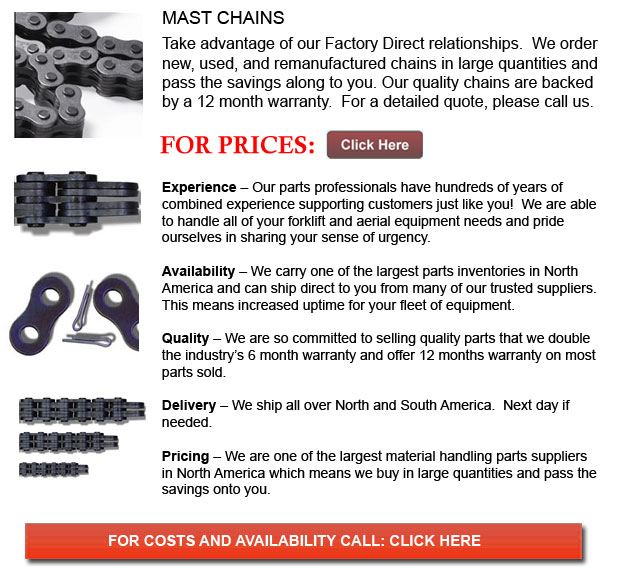
Mast Chain - Leaf Chains consist of different functions and are regulated by ANSI. They are designed for tension linkage, lift truck masts and for low-speed pulling, and as balancers between head and counterweight in certain machine tools. Leaf chains are sometimes even known as Balance Chains.
Construction and Features
Leaf chains are steel chains utilizing a simple pin construction and link plate. The chain number refers to the pitch and the lacing of the links. The chains have particular features such as high tensile strength for each section area, that enables the design of smaller machines. There are B- and A+ type chains in this series and both the BL6 and AL6 Series comprise the same pitch as RS60. Lastly, these chains cannot be powered with sprockets.
Handling and Selection
In roller chains, the link plates have a higher fatigue resistance because of the compressive tension of press fits, yet the leaf chain only contains two outer press fit plates. On the leaf chain, the maximum permissible tension is low and the tensile strength is high. If handling leaf chains it is essential to confer with the manufacturer's manual so as to ensure the safety factor is outlined and utilize safety measures at all times. It is a great idea to exercise utmost care and use extra safety guards in applications where the consequences of chain failure are serious.
Utilizing a lot more plates in the lacing causes the higher tensile strength. In view of the fact that this does not improve the most acceptable tension directly, the number of plates utilized can be limited. The chains require regular lubrication for the reason that the pins link directly on the plates, producing an extremely high bearing pressure. Making use of a SAE 30 or 40 machine oil is often suggested for the majority of applications. If the chain is cycled over one thousand times day by day or if the chain speed is over 30m for each minute, it would wear very quick, even with constant lubrication. Thus, in either of these situations utilizing RS Roller Chains would be more suitable.
AL type chains are just to be used under certain conditions like for example where there are no shock loads or if wear is not a big problem. Be sure that the number of cycles does not go over 100 each day. The BL-type will be better suited under other conditions.
If a chain using a lower safety factor is selected then the stress load in parts would become higher. If chains are utilized with corrosive elements, then they may become fatigued and break quite easily. Performing regular maintenance is essential if operating under these types of situations.
The outer link or inner link kind of end link on the chain would determine the shape of the clevis. Clevis connectors or Clevis pins are made by manufacturers, but the user normally supplies the clevis. A wrongly made clevis can decrease the working life of the chain. The strands should be finished to length by the producer. Refer to the ANSI standard or call the manufacturer.
![]() Click to Download the pdf
Click to Download the pdf
Forklift Parts








Lift Parts Express
TOLL FREE: 1-888-695-7994
LOCAL: 806-589-3629
6923 INDIANA AVE 228
Lubbock, Texas
forkliftpartslubbock.com
Email Us
About Us



